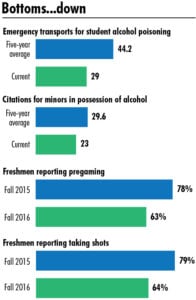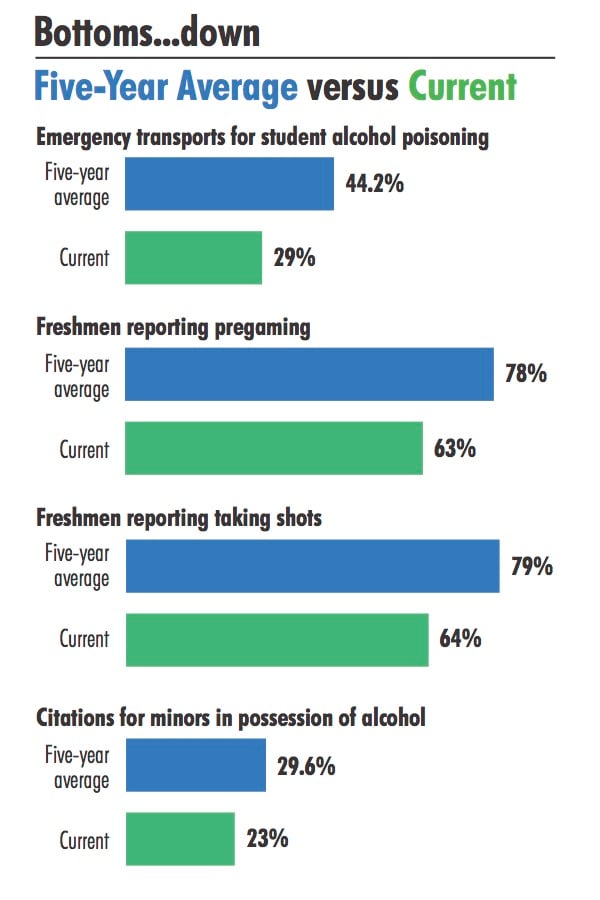
Student Affairs and the Alcohol Advisory Board have been working with a “national expert” and University staff to measure the impact of the new policies, Castro wrote. The policy changes included the prohibition of high volume containers of hard alcohol as well as a ban on all hard alcohol at undergraduate parties. The new rules prompted concerns among some students and faculty when they were announced; many argued the changes would damage the relationship between Residential Staff and students as well increase dangerous activity by encouraging drinking behind closed doors.
While Castro noted that Stanford needs “more time to measure sustained change,” he suggested that the policy changes have had positive effects on the student body.
He cited a 34 percent decrease in the number of alcohol-caused transports this year compared to the previous five-year average. In addition, he wrote, campus has seen a 22 percent drop in the number of citations this year for minors in possession of alcohol.
While 79 percent of freshmen in 2015 claimed to have taken shots, 64 percent of the Class of 2020 reported similar behavior; similarly, in 2015, 78 percent of freshmen said they pre-gamed, while in 2016 63 percent did. Upperclass students’ alcohol habits showed little change, however.
Castro also noted a disparity between how students see themselves and others following the new policies. Findings showed that 12 percent of Stanford students believe that their peers follow the rules, while 55 percent of students self-reported adherence to them. Multiple anonymous student sources told The Daily they were hesitant to believe that students and staff would follow the new guidelines on hard alcohol possession.
Similarly, Resident Assistants (RAs) who spoke to The Daily said they were reluctant to carry the rules out.
“We are taking a pretty liberal stance in how we enforce the policy,” said one RA of a freshman dorm. “We are not police officers. Our primary role is the well-being of the residents … I have never personally confiscated alcohol.”
OAPE has been building up programs to encourage safe alcohol use. With a large anonymous donation received earlier in the year, Cardinal Nights has expanded its programming and will continue to do so, and OAPE has purchased a second hybrid car to drive intoxicated students back to their residences. OAPE also has plans to bring a well-known comedian or performer to campus every quarter and increase the pay of peer health educators (PHEs) with a stipend of $1,000 to conduct alcohol and drug outreach. This will be in addition to the recent $3,075 pay raise recently given to PHEs following controversy over the wage gap between PHEs and RAs.
Despite his optimism surrounding expanded alcohol programming, Castro cautioned student staff looking toward spring quarter to “remain vigilant.”
“Spring is always a risky time with alcohol,” Castro wrote, encouraging student staff to set an example for residents.
Contact Josh Kazdan at jkazdan ‘at’ stanford.edu.
Editor’s note: a prior version of the graphic in this article showed incorrect information. The Daily regrets these errors.
